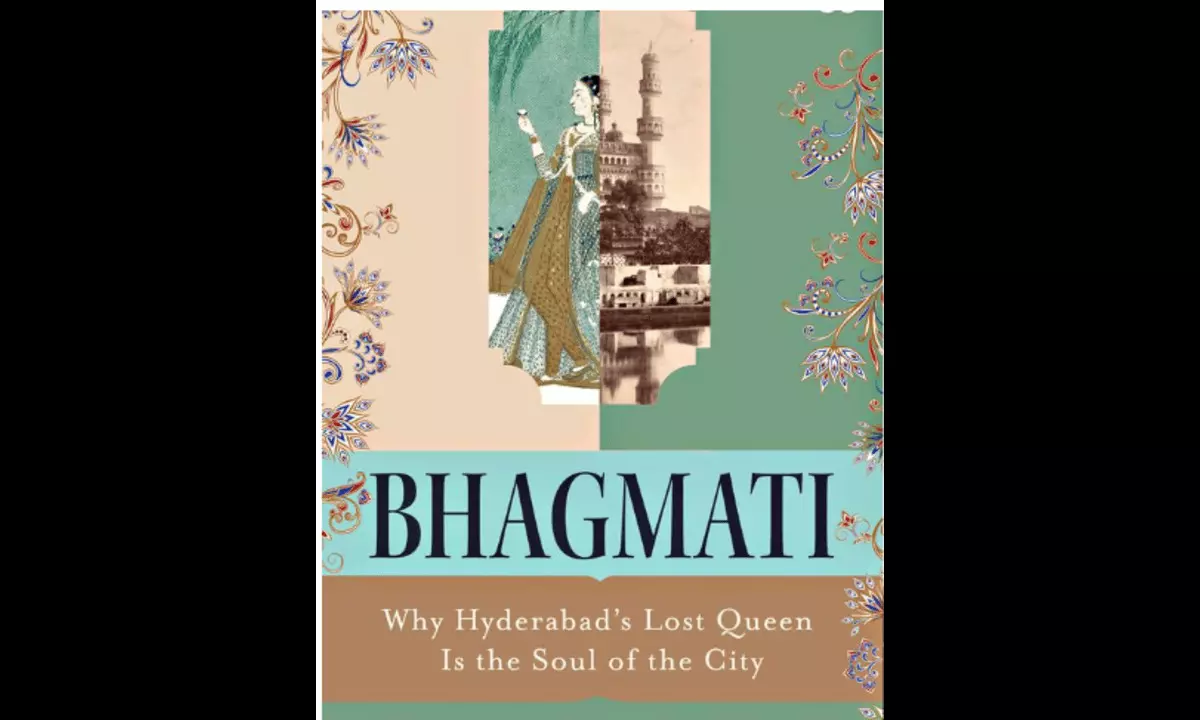Live
- Bullock Cart Racing Marks Shiva Veeranjaneya Swamy Jatara in Aragidda
- Dr. Narendra Nayak Re-Elected as President of Federation of Indian Rationalist Associations
- Nagar Kurnool Dali CC Cricket Team Wins Rs 6,11,111 in QHIZAR YAFAI Gold Cup 2025
- NASA Astronaut Suni Williams Steps Out for Spacewalk After 7 Months in Orbit
- India Open 2025: Sindhu cruises into quarters with win over Manami Suizu
- Essential Nutrients Every Expectant Mother Needs for a Healthy Pregnancy
- BCCI Appoints Sitanshu Kotak as Batting Coach After Gautam Gambhir's Request
- Employment Guarantee Scheme Works Reviewed in Ittikyala Mandal
- Hydration, Refreshment, andHydration, Refreshment, and Connection—Coca-Cola India’s Signature at Maha Kumbh 2025
- Coldplay Mumbai Concert: Special Train and Bus Services for Easy Access to DY Patil Stadium
Just In
Discover the Legacy of Bhagmati, Hyderabad’s Lost Queen, in New Book


Discover the Legacy of Bhagmati, Hyderabad’s Lost Queen, in New Book
Moupia Basu’s new book dives into the legend of Bhagmati, Hyderabad’s lost queen, exploring her role in the city’s history and identity.
Pune-based author Moupia Basu’s latest work, Bhagmati: Why Hyderabad’s Lost Queen Is the Soul of the City (Westland), sheds new light on the enigmatic figure of Bhagmati, the woman often linked to the origins of Hyderabad. Through a combination of documented history and folklore, Basu explores the construction of the Purana Pul, a 600-foot bridge built by Ibrahim Qutb Shah in 1578, and its connection to the city’s naming.
The bridge, which spans the Musi River, has long been associated with the romantic tale of Muhammad Quli Qutb Shah’s love for Bhagmati. The legend claims that the bridge was built after Quli Qutb Shah crossed the river to meet Bhagmati, a story that is said to have influenced the naming of Hyderabad. However, the authenticity of this tale has been questioned due to the absence of written records or physical markers, such as a tombstone, to corroborate it.
In her book, Basu takes readers through a blend of historical facts and oral traditions, presenting a nuanced view of Bhagmati’s life and her role in the city’s history. She emphasizes that, for many residents of Hyderabad, the legend of Bhagmati and Quli Qutb Shah’s love story is more than a historical debate; it’s a cherished part of the city’s identity. “The belief that their home was built on love is what matters most to the people of Hyderabad,” writes Basu.
Basu, who lived in Hyderabad for two years, returned to the city six years later for another stint. During her time there, she observed the enduring sense of communal harmony between the city’s Hindu and Muslim populations. She noted that, despite the modern changes in the city’s appearance, the warmth of its people remained unchanged. “The Ganga-Jamuni tehzeeb, or the harmonious coexistence of both communities, is still alive in the Old City,” she observes, pointing out the shared celebrations and the mutual respect between the people of different faiths.
The author’s research into Bhagmati’s life is rooted in a deep dive into contemporary records. Basu was particularly struck by the lack of any official memorial to Bhagmati, despite her prominence in the historical accounts of her time. “How could there be no mention of a queen or consort during Muhammad Quli Qutb Shah’s reign?” Basu questions. “This absence felt deliberate.” She suggests that the erasure of Bhagmati from official records may have been a conscious effort to avoid the embarrassment of acknowledging a dancer as a queen, particularly after Muhammad Quli’s death.
While Bhagmati’s legacy has been obscured over time, Basu found ample evidence from travelers and chroniclers of the era who referred to her. Despite the scarcity of direct references in official records, Basu is convinced of Bhagmati’s historical existence, presenting her case through a balanced examination of available evidence.
One of the key themes in Basu’s book is the misconception that Hyderabad was ever called Bhagyanagar. She clarifies that historical sources consistently refer to the city as Bhagnagar, named after Bhagmati, and not Bhagyanagar. Basu points out that the confusion likely arose due to the similarity in the meanings of the words ‘Bhag’ and ‘Bhagya,’ but insists that the name Bhagnagar directly refers to Bhagmati. Maps and documents from the time continue to use the name Bhagnagar for over a century after the city’s establishment.
Basu’s Bhagmati offers a fresh perspective on one of Hyderabad’s most enduring legends, encouraging readers to explore the history of the city and its lost queen. The book also delves into the cultural and political significance of Bhagmati’s story, inviting readers to engage with the broader narrative of Hyderabad’s rich heritage.
Bhagmati by Moupia Basu is published by Westland and will be featured at the 15th edition of the Hyderabad Literary Festival, taking place from January 24 to 26.
- Moupia Basu Bhagmati book
- Hyderabad’s lost queen Bhagmati
- Bhagmati history Moupia Basu
- new book on Bhagmati Hyderabad
- Moupia Basu Hyderabad queen
- Bhagmati lost queen of Hyderabad
- Hyderabad history Bhagmati book
- Moupia Basu new book release
- Bhagmati story Hyderabad’s queen
- historical books on Hyderabad queens

© 2025 Hyderabad Media House Limited/The Hans India. All rights reserved. Powered by hocalwire.com






